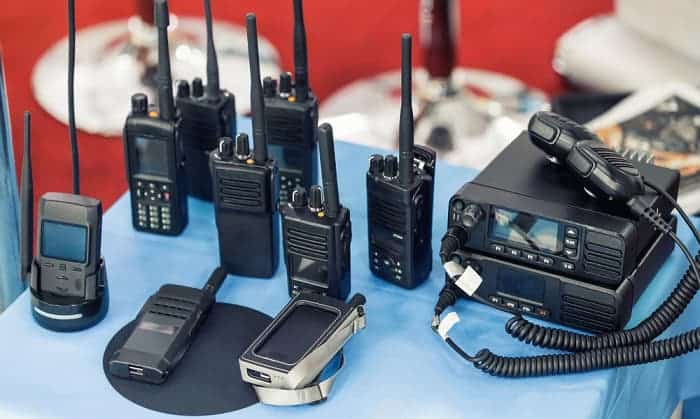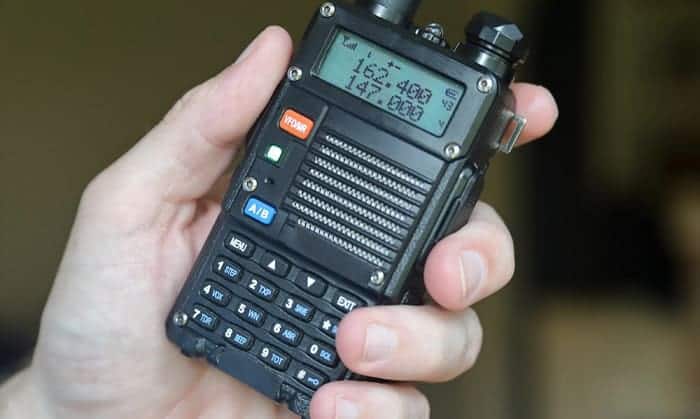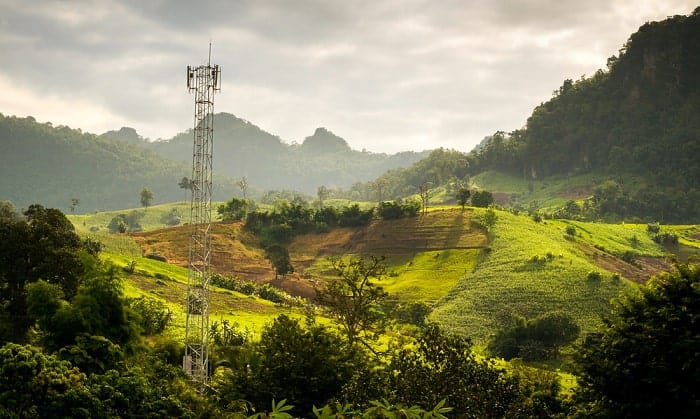Communication is crucial these days. If you’re interested in learning how to build a radio repeater, you’ve come to the right place.
The article introduces a detailed radio guide and tips on building a repeater, which should help every new hobbyist or radio amateur communicate over great distances using standard transmitters and receivers.
We’ll look at what a radio repeater is, how it works, and how to make one DIY repeater in this post. Finally, using the proposed full-duplex communicator architecture in this article, you will be able to construct a mini repeater station.
The instructions and explanations below can be used for short-distance communication at a camp, as an intercom, or for other similar purposes.
Table of Contents
What is a Radio Repeater
We’ll use the walkie-talkie as an example. A walkie-talkie is a half-duplex communication device, meaning it can only communicate in one way at a time.
Consider the following scenario: Person ‘A’ can communicate with person ‘B’ by walkie-talkie, but ‘B’ cannot respond simultaneously, and vice versa.
There may be barriers in the way of modulated signal propagation from walky-talky ‘A’ to walky-talky ‘B,’ such as mountains, buildings, trees, and so on. Because of these barriers, the range of the propagated signals may be reduced, and the person on the receiving end may receive heartbroken messages.
To avoid problems like this, we use a radio repeater. A radio repeater extends the range of the sent signal, sometimes up to 100 kilometers, ensuring that the receiving party receives a clear signal.
When you build a repeater with two mobile radios, it’ll help to increase the range of the signal being delivered.
The repeater station is built on top of hills to receive the maximum signal from a node and re-transmit it with less distorted signal to single or multiple nodes. Only when the repeater is within range of the transmitting node will it rebroadcast the signal to numerous nodes.
How to Build a Radio Repeater: 2 Essential Steps
1. Repeater Site Survey
First and foremost, this process can also refer to how you set up a ham radio repeater – or amateur radio repeater. Typically, a ham radio repeater is an electronic device that transmits a low-level signal to a higher level. Thus, the signal’s quality can be maintained even when traveling long distances.
Depending on the configuration, two-way radio installation can be either moderately tricky or exceedingly simple.
Two antennas are generally required for high-power repeaters, each of which does the job of receiving or transmitting. Please note that you should seek help and advice from a professional since this method is not quite suitable for inexperienced users.
Yet, for shorter distances, a conventional repeater just requires one repeater antenna, which is more straightforward for many to replicate. This type of repeater is often a hand-held device that sends and receives signals from two-way radios.
The location of the antennas in a two-antenna system is crucial because it keeps the receiving antenna from absorbing energy from the broadcasting antenna. To reduce interference, you should consider different heights to set up your antennas.
Some repeaters contain a built-in or add-on duplexer to make installation easier. This component allows simultaneous signal processing on one antenna, consisting of circuits that separate the transmitter and receiver.
In this method, the radio frequency of the transmitter does not harm the receiver.
After that, the repeater is placed together with a high-performance antenna at the area’s tallest point. By doing this, the overall functioning and effectiveness of signals are substantially enhanced.
Before taking the radio coverage test (which we mention in the next part), remember that your site study always plays a crucial part to ensure the proper operation of your repeater.
2. Find The Right Position
When you’re done with site surveying, it’s time to find the correct installation location to finish setting up a radio repeater.
Your antenna position must be taken care of properly; otherwise, your radio communication performance should never live up to your expectations.
Despite all the pressure as stated above, it’s not difficult to choose a suitable location for the repeater.
In radio transmission, pay attention to the line of sight. Signal transmission can be hampered by trees, electricity towers, hillsides, or any other objects that have a dense structure.
Sometimes, your radio repeater can still work well without a clear line of sight. However, chances are you’re not gonna be lucky all the time. Don’t give up on finding a prime spot too soon, unless you don’t have any other options.
Different Types of Radio Repeaters
There are several varieties of radio repeaters, each with its own set of features and applications.
- Low power repeaters: For onsite communications, low-power repeaters with low-level antennas are utilized. These are typically used for moderate-size areas, such as a small town or a college campus. The transmitting power of these devices could be as low as 2 to 5 watts.
- High power repeaters: To maximize coverage areas, high-power repeaters are positioned atop towering buildings or hilltops. These are suitable for users with low-powered two-way radios to communicate over long distances. These systems can have a transmitting power of up to 100 watts.
UHF (Ultra High Frequency) and VHF (Very High Frequency) transmissions are strengthened and sustained by these repeaters, especially in rough terrain and over water.
2 Important Functions Of a Radio Repeater
Regenerate a broadcast signal
A repeater takes a broadcast signal and regenerates it before sending it to the next receiving station. A network of repeater sites allows a signal to be extended across an extremely long distance.
Digital repeaters can remove the undesired signal and entirely restore a digital signal. Analog signals, on the other hand, are boosted by amplifiers, which, regrettably, often enhance noise in addition to audio data.
Improve the performance
- When strategically placed on top of a tall structure, a repeater can significantly improve wireless network performance. Particularly, it allows communicating over long distances that would usually be difficult to achieve.
- Some businesses are now entirely relying on digital signals instead of analog. Thus, amplifiers are commonly required to prevent digital signals from scattering, which would happen when they are not placed in 3,000 to 6,000-meter intervals.
Conclusion
All in all, a repeater is typically placed on top of a tall structure or a mountain, and it is equipped with a powerful antenna system that allows it to collect weak signals and transmit over a large area. A repeater can extend a low-power handheld radio’s effective communication range to dozens, if not hundreds, of kilometers.
By the end of this article, hope that you have successfully grasped some valuable knowledge of how to build a radio repeater by using wires, a radio link, a phone connection, or even digital audio technology through the Internet.

After four years working as a radio mechanic, I know that everything about radio communication is not breezy, even though it greatly benefits us. That is why I set up a website sharing my skills and guides to help non-professional users use their radio headsets, set up their antennas or choose the right products, etc.




